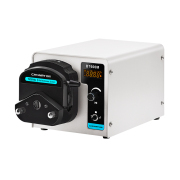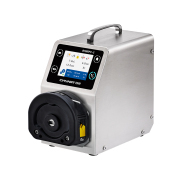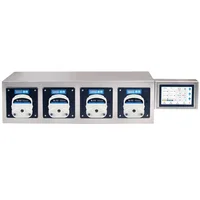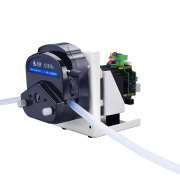News

How to choose a suitable pump
When choosing the right peristaltic pump, we can choose from the flow, suction head, discharge head, transmission medium, health grade, maintenance, and other parameters.
1. To pump a medium with low viscosity that may contain solid particles, consider using a centrifugal pump. A centrifugal pump is a sturdy piece of equipment and usually has good efficiency.
This type of pump can pump large quantities of liquid at a constant flow rate. Usually, they are not self-priming. Therefore, a separate perfusion loop must be used before the pump is put into use.
You may also consider using this type of pump to supply water to wastewater treatment plants and to deliver viscous liquids or cleaning fluids, such as in the petrochemical industry.
2. Peristaltic pumps may be considered when you need to ensure that the liquid being pumped is not contaminated by external substances. They are ideal for clean, sterile, or corrosive media. This pump also allows you to accurately quantify the medium.
For this type of pump, the medium is moved through a pipe or tube and does not come into contact with the pump body, ensuring a hygienic pumping medium.
Peristaltic pumps are self-priming pumps because the recovery of the pipe creates a self-priming effect and allows the pump to drain fluids containing air or possibly gaseous residues.
On the other hand, this type of pump is relatively bulky compared to other pumps with similar flow rates. In addition, the flow rate is not constant because the peristaltic pump operates in a pulsating form. The pump also requires regular maintenance to prevent hose wear in the pump body, but the hose is the only component that needs to be replaced, so the cost is relatively low.
Peristaltic pumps usually operate at low flow rates.
Mainly used in the chemical industry and medical field.
3. Gear pumps can be used when viscous fluids without solid particles need to be transported under high pressure. Therefore, gear pumps are suitable for pumping high viscosity materials at high temperatures, and can also reverse the direction of pumping.
The pump features a constant flow rate and low noise during operation. Gear pumps are usually reliable, compact, and simple in design, so maintenance costs are not high. However, it is not ideal for high traffic use.
Gear pumps are widely used in the automotive industry to lubricate all engine parts. They are also often used in plastic processing, automatic presses, or the foundry industry.
The pump can also provide a quantitative function.
4. Piston pump can be used in low viscosity and medium flow medium (range of 80m³/ h). In addition, solid particles cannot be pumped using this type of equipment, as proper pump operation can only be ensured if there is a good seal between the cylinder and piston.
For high-pressure applications, a plunger pump is an option, unlike a piston pump, because the seals do not move with the piston, the plunger pump is fixed and therefore able to withstand higher pressures.
There are different versions of multi-piston pumps (double piston pumps, triple piston pumps, etc.) which ensure long pump life due to the distribution of pressure across multiple pistons. In this case, be careful with the speed of rotation, because when you choose to reduce the number of pistons to achieve the same pressure level, the speed is higher and therefore there may be a higher pulsation.
Piston pumps are ideal for high-pressure applications such as pumping units, high-pressure cleaners, or as an alternative to diaphragm pumps for quantitative applications.
0users like this.










